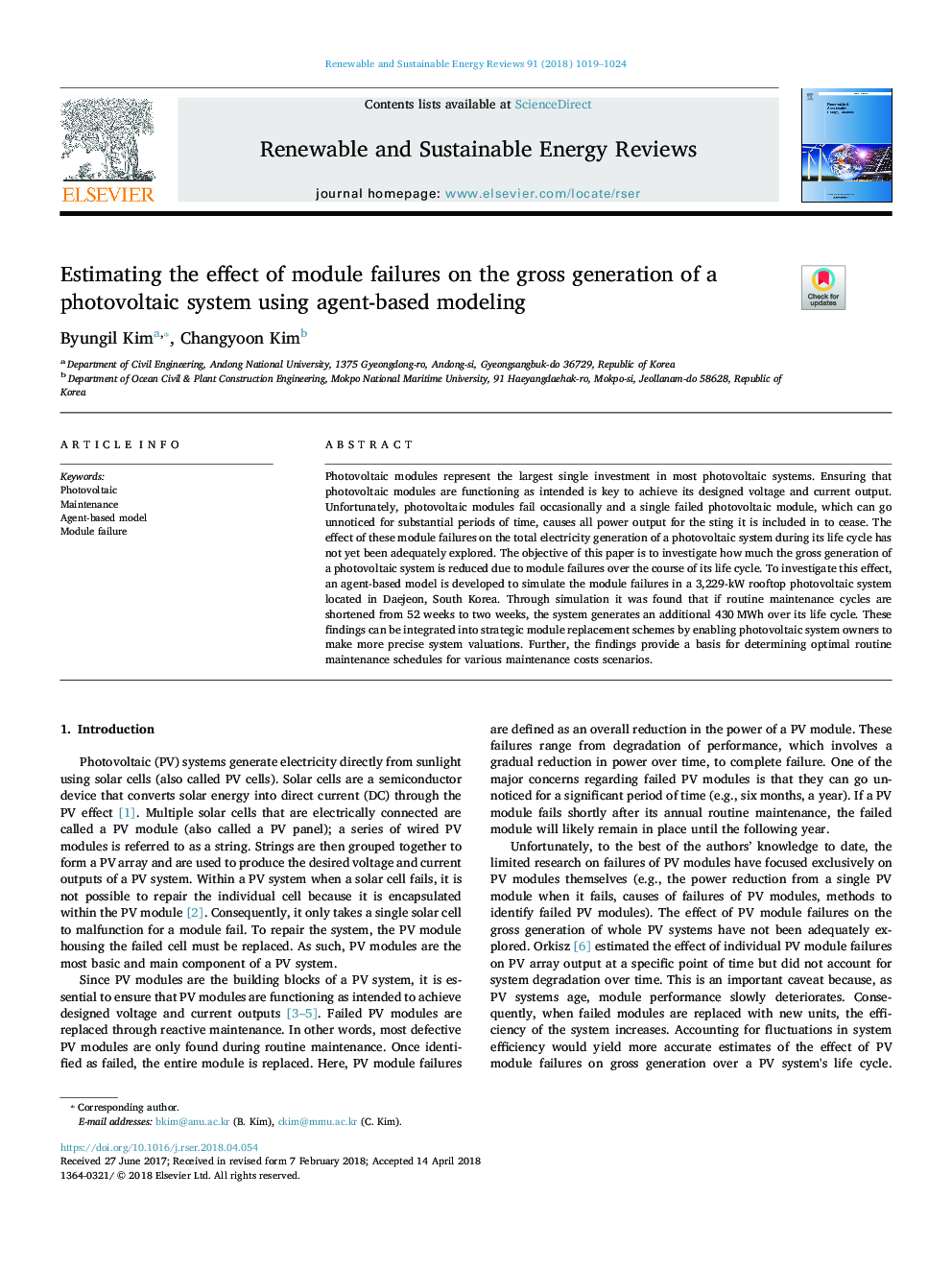| Article ID | Journal | Published Year | Pages | File Type |
|---|---|---|---|---|
| 8111256 | Renewable and Sustainable Energy Reviews | 2018 | 6 Pages |
Abstract
Photovoltaic modules represent the largest single investment in most photovoltaic systems. Ensuring that photovoltaic modules are functioning as intended is key to achieve its designed voltage and current output. Unfortunately, photovoltaic modules fail occasionally and a single failed photovoltaic module, which can go unnoticed for substantial periods of time, causes all power output for the sting it is included in to cease. The effect of these module failures on the total electricity generation of a photovoltaic system during its life cycle has not yet been adequately explored. The objective of this paper is to investigate how much the gross generation of a photovoltaic system is reduced due to module failures over the course of its life cycle. To investigate this effect, an agent-based model is developed to simulate the module failures in a 3,229-kW rooftop photovoltaic system located in Daejeon, South Korea. Through simulation it was found that if routine maintenance cycles are shortened from 52 weeks to two weeks, the system generates an additional 430â¯MWh over its life cycle. These findings can be integrated into strategic module replacement schemes by enabling photovoltaic system owners to make more precise system valuations. Further, the findings provide a basis for determining optimal routine maintenance schedules for various maintenance costs scenarios.
Related Topics
Physical Sciences and Engineering
Energy
Renewable Energy, Sustainability and the Environment
Authors
Byungil Kim, Changyoon Kim,
